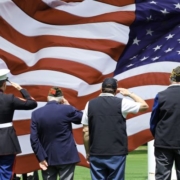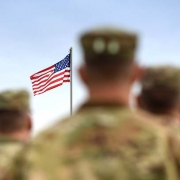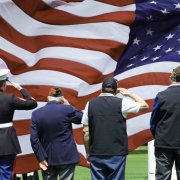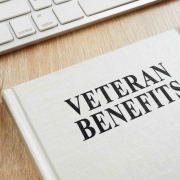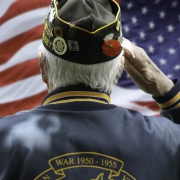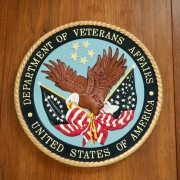Reasons Veterans Miss Out on Veteran Disability Benefits
 Today, more than 18 million American military veterans are living in the United States. To address the needs of this population, the U.S. Department of Veterans Affairs (VA) has expanded health, education, home loan, and other veteran benefits over the years.
Today, more than 18 million American military veterans are living in the United States. To address the needs of this population, the U.S. Department of Veterans Affairs (VA) has expanded health, education, home loan, and other veteran benefits over the years.
VA disability payments are one of the most common entitlements veterans overlook. However, they are often one of the most essential to their well-being. Among the reasons that veterans miss out on VA disability benefits are the following:
- Confusion about the types of benefit programs and how to qualify
- Complexity of the application process
- Previous claim denial
Understanding How to Qualify as a Disabled Veteran
One misconception is that combat operations involvement is a requirement to be eligible. To qualify for VA compensation or disability, a veteran does not need to have seen combat. They also do not have to have an orthopedic condition such as missing limbs or damaged muscles.
Any veteran whose service received an honorable discharge from active-duty military service may qualify for VA compensation or disability benefits. Those who are eligible also include individuals in the National Guard or Reserve mobilized or activated for service.
You may currently cope with a condition or an illness that affects your mind or body and links back to your military service. In that case, you may have criteria qualifying you to receive a VA Disability Rating. Even common conditions like back or knee pain, GERD, PTSD, and more may relate to your military service.
Your service may cause problems that develop years later, like exposure to environmental toxins or Agent Orange. Even without active-duty medical records, these medical conditions can be service-connected by your physician and attorney. Whether your military service directly caused or only aggravated your disability, it is worth determining whether you merit service-connected disability benefits.
Have an Attorney Handle All the Paperwork
Undergoing a claims process for VA disability benefits can be lengthy and daunting. Sadly, many veterans give up once they see the application. Free government services exist that help guide veterans through the proper paperwork. However, meeting with these service providers can sometimes be difficult because of high caseloads.
A negative first experience may cause significant delays, turning a veteran away from the process and much-needed benefits. A veteran’s attorney can prove essential to your application’s success. They can be responsible for filling out the application correctly, attaching necessary documents, and submitting them ahead of deadlines.
Disability Claim Denial
It can be disheartening to receive an application denial. However, denials are often a result of filing incorrect forms or missing important application deadlines. It isn’t easy to know which documents are appropriate, especially if you have previously faced a denial of benefits.
A general appeal form to amend an initial denial contains various options that can further complicate your appeal. A qualified attorney will understand the highly sensitive nature of disability claims and the timing for Intent to File, Presumptive Period, and other appeal or supplemental claims. Failure to meet claim deadlines can result in continued denial of benefits.
Compensation and Pension (C&P) Exam
After overcoming complex claims paperwork and submitting all requirements, veterans may face another hurdle. The VA may schedule a Compensation and Pension (C&P) Examination.
The VA may require a veteran seeking disability benefits to have this medical exam, which assesses the severity of the veteran’s condition. The VA can deny a veteran’s application if they do not attend the evaluations. Results of the C&P Examination become part of your file, and attendance is crucial for claim approval.
Confusing Disability With Other VA Benefits
VA disability benefits do not prohibit employment. Veterans may confuse disability benefits with a VA program called Total Disability Individual Unemployability (TDIU). To qualify for TDIU, a veteran must be unable to keep or obtain a job. Veterans with a VA rating for a disability can receive benefits and still maintain employment without limitation.
Often a veteran will confuse Social Security Disability benefits with VA service-connected disability benefits. These are two separate programs, and you can be eligible for both. Qualifying for Social Security disability benefits will not automatically make a veteran eligible for VA disability benefits, and vice versa.
Mental health claims and treatment can also create confusing issues for veterans regarding their legal rights. A VA mental health rating and mental incompetence are not the same things. A VA rating for mental health will not put a veteran at risk of losing constitutionally protected rights. There are instances where an individual can be mentally incompetent without the presence of depression, anxiety related to chronic pain, or PTSD.
Mental health benefit claims are as important and valid as physical claims. Before you discount these powerful claims, consult with an attorney who can help you understand your situation and protect benefits that may be due to you.
Filing VA claims can be stressful, particularly when you have a limited understanding of the forms, procedures, and deadlines. Other complex legal issues can also lead to benefits claim denials. Be sure to take a practical approach to processing applications that maximizes your ability to qualify and secure approval. US military veterans seeking VA disability have a much better chance at success with the guidance of an attorney.
For questions about estate planning to help you qualify for Veterans pension benefits, contact Elder Law Attorney and VA Accredited attorney Add Goff.

